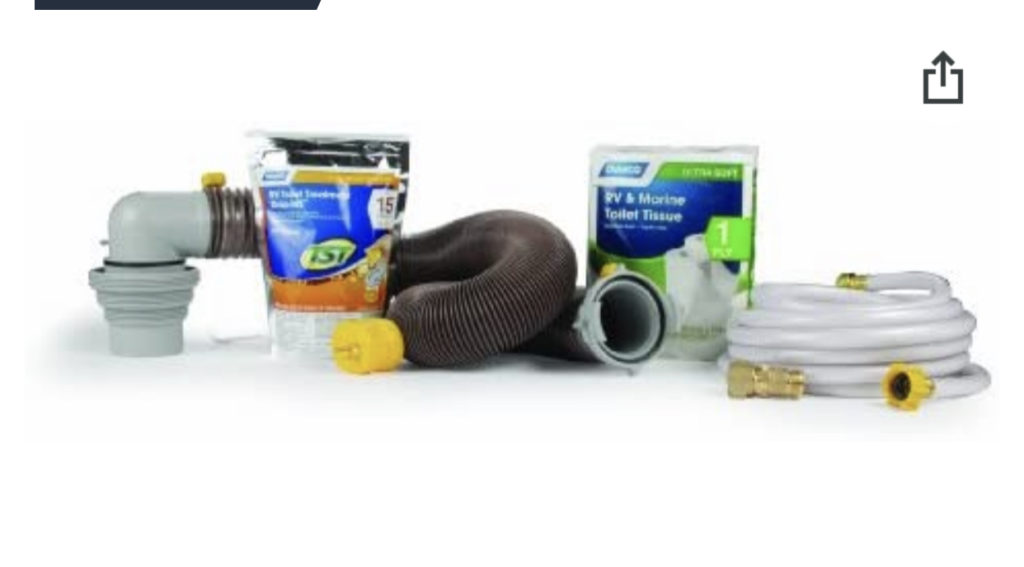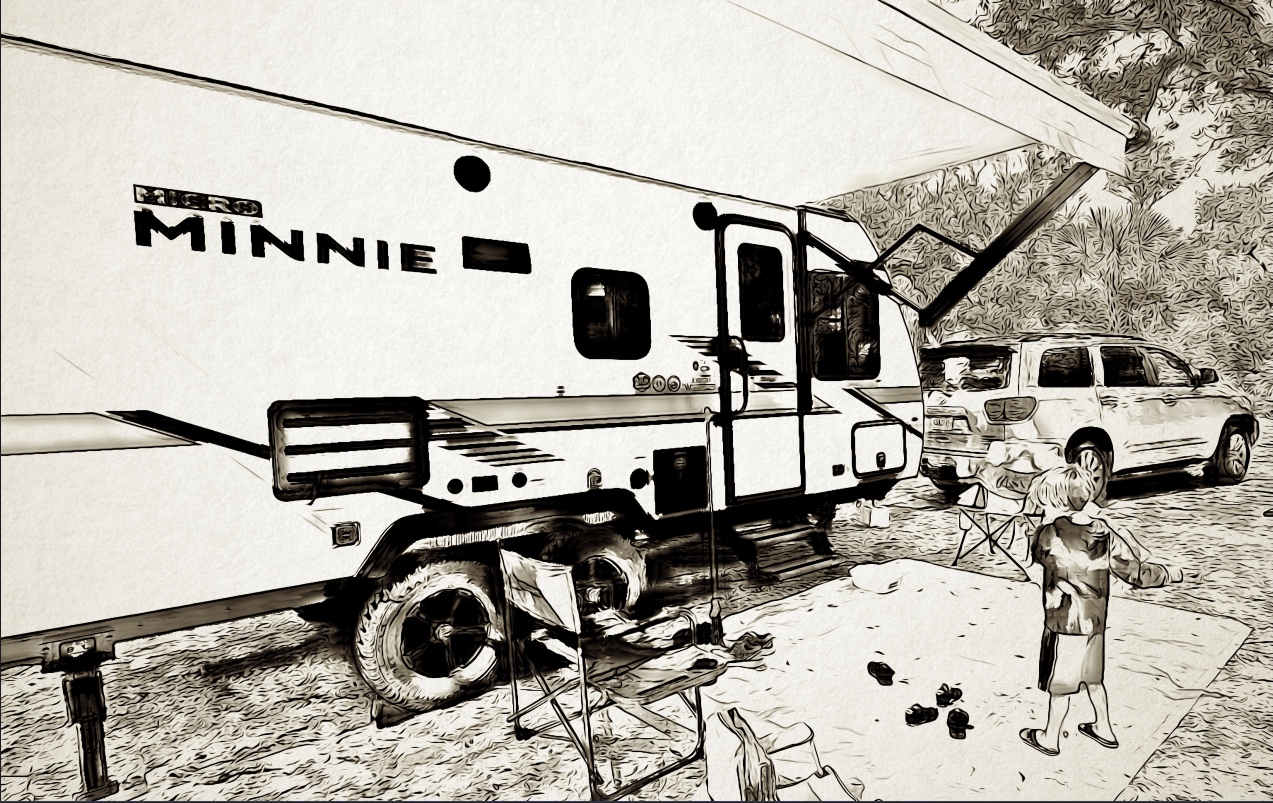Our camper is a Winnebago Micro Minnie 2100 BH (Bunk House) Travel Trailer. Here’s how we narrowed down the huge list of options and picked her.
Update to this post! We finally named our Camper! Introducing: the “King Bird”
KEY TAKEAWAYS
Narrow down your requirements of type, length, weight, and budget ● Build a filter online to identify your short list ● Visit the dealerships or rent to get a feel for the model ● Turn on your negotiation skills to get the best price.



What are your requirements?
Picking a camper can be hard work. You first need to decide on what’s most important. And, you often don’t discover what’s important until you use a camper. So many people recommend to rent a camper first to try it out.
Or, if you have a friend with a camper. Borrow one! (thanks Dan).
Looking back, the most important questions I needed to ask myself were the following.
Requirement #1: Camper length
Our tow vehicle is a 2011 Toyota Sequoia. The trailer measures in at about ~23 feet and the Sequoia ~17 feet. Together they are just over 40 feet.
The Camper Report put together an analysis that indicates 53% of all National Park Campgrounds can fit RV”s up to 40′ in length. You’ll want to consider this as you determine your requirements
Requirement #2: RV, Fifth Wheel or Travel Trailer?
RV’s have the engines and the house in one unit. Fifth wheels are a separate travel trailer, but hitch up to a Truck bed, where as a Travel Trailer hitches to the tow hitch.
We chose a Travel Trailer because it is small, lightweight and can be easily disconnected from the Tow Vehicle so we can explore the places we are camping.
Requirement #3: How much weight can I tow?
Don’t ever believe what a sales person at an RV dealership tells you about what your vehicle can tow. Do the math before you go. There is an EXCELLENT video and downloadable calculator explaining how to calculate what your vehicle can actually tow by the Travel Ginger here.
You need to look at a few factors.
Factor A: Payload capacity
First, determine Payload Capacity. This is how much weight you can add to your car before it starts to impact your suspension and frame. The Payload on a 2011 Toyota Sequoia is 1,330. After you add in the kids, weight of items in the trunk, weight distribution hitch and hitch weight of the camper, we are about 1,100 lbs / 1,330 lbs or 82% of the capacity.
Factor B: Gross Weight of your vehicle
Second, total up your Gross weight of your vehicle and compare it to your Gross combined vehicle weight rating. You will find the ratings in your manual.
Curb Weight of a 2011 Toyota Sequoia (5,770 lbs)
+ Hitch Weight * 10% of the GVWR of your camper (550 lbs)
+ Estimated Payload weight of passengers & cargo (550 lbs)
+ Fully loaded weight of your camper (GVWR) 5,500 lbs
= 11,820 lbs (Gross combined vehicle weight) / 13,600 lbs (Gross combined vehicle weight rating) = 87% of the capacity.
Factor C: Tire Capacity
Third, check that you are not in excess of the load capacity of your tires, as determined by the Tire Load Capacity index.
Pro Tip: Once you have a camper and tow vehicle you can take it to a trucker’s scale. Most truck stops have these for semi trucks so they can weigh themselves before going through checkpoints. Compare the Gross Axel Weight Rating from your manual (for your Drive axel) to the actual weight as determine by the scale.
Never do you want to be over 90% of capacity on any factor!
After doing all this math, and buying my camper, I found that when I drove it to the Scales with my fully loaded rig, the actual weight on my drive axel is 92% of capacity. So caveat emptor!



Requirement #4: Choosing a floor plan.. Bunkhouse?
Honestly, the answer can only be determined by visiting a dealer or renting the camper. It’s hard to get a feel for a floor plan otherwise.
To bunk or not?
How big of a bed for mom and dad? How many kids? If you have kids, chances are you’ll want to have a bunk house. Your sleeping arrangement is an important consideration.
We are a family of 4, with 2 little ones (ages 3 and 5). Thus, a Full Sized bed (or as the clever marketers at Winnebago call it, a Queen sized RV Bed), for Mom & Dad. And Bunk beds for the boys. The dinette also folds down into a bed, in case you need to make room for one more.
We ultimately landed on the one here with a slide for the dinette. The exterior pack and play allowed allows you to fold up the lower bunk and pack it with a bunch of stuff. There is also pass through storage underneath the Bed in front. Tons of storage!
Our Floor Plan

Requirement #5: Budget & Taxes
How much do you really want to spend? Our budget was to spend less than $30,000. There are lots of options at this price tag.
Make sure you include Taxes, and any extra items you require in your budget. You will immediately spend upwards of $1,000 on necessary upgrades almost immediately.
See my article on upgrades here (coming soon).
Pro Tip: You need to research the Taxes in your state. In Georgia, where we purchased, the we ended up paying $2,300 in sales taxes! And, to add insult to injury, we have to pay a personal property tax each year of around $400. Ouch!
Requirement #6: Brand
We ultimately chose Winnebago because they have a good reputation for quality. This helps with resale value, and support on the problems you’ll encounter down the road.
Our runner ups were Grand Design and Airstream. Grand Design did not have enough options that were less than 5,500 lbs. And, we could not find any Airstreams in our budget.
Camper Requirements Summary
So there you go, summarized as follows:
- #1: 20 – 25 Feet
- #2: Travel Trailer
- #3: 5,000 – 5,500 lbs in gross vehicle weight (Fully loaded)
- #4: Bunkhouse model
- #5: Price of around $27,000 (with taxes, fees and extras bringing you to your budget of $30,000)
- #6: Winnebago
Nice to have – Camper features:
- Air conditioning and heating – ours came with an upgraded 15,000 BTU A/C
- 8 cu. ft. Propane Fridge (highly efficient, for boondocking)
- 100 watt Solar Panel and controller
Once you’ve determined your requirements, you can use filters on searches to narrow down the precise model. In our case, Winnebago Micro Minnie 2100 Bunkhouse Travel Trailer.
How do I find a camper?
With these criteria in mind, you begin your search. I recommend going to a dealership (whether you are ready to buy or not). Just to browse, tell the sales person your important criteria and have them show you a few floor plans. Bring the kids too!
- Local RV Dealers
- Dealer Websites
- Google Searches
- RV Trader – I had a daily search setup on the RV Trader app, sending my updates.
New vs. Used?
The all important decision. It really comes down to how much are you willing to pay up front. Used campers have a lower up front price, but may have higher maintenance / repair costs which kick in right away. New campers have a higher up front price and generally come with a Warranty, so you can defer maintenance / repairs.
Buying a Used Camper?
Unless it is still under warranty (Assuming you can transfer the warranty), I always recommend having it inspected by a qualified technician. The National RV Inspector’s Association is your best bet. Here they can connect you with a technician who will meet you at place of purchase.
Do the math, make a decision. We ended up purchasing new, here’s why:
First, we were buying during a pandemic. The prices of used campers were only a few thousand less than that of new.
Second, we wanted a strong warranty and to purchase from a reputable dealer. Buying used, you need to include the cost of an inspection and you take a risk if there is no warranty.
Ready to buy? Here’s how to close the deal.
After deciding on the precise make and model. Take inventory of every RV dealer in a 300 mile radius that carries the exact camper you want.
Call each RV dealer and ask them for a quote for an “out the door” price. This includes taxes and the camper costs. Make sure you have them clarify in writing any upgrades you want (i.e. 15,000 BTU A/C, Propane Fridge, etc…).

Official Dealer Quote
Negotiate, negotiate, negotiate!
Tell them you are shopping around and want their best and final price. Schedule a call with each of the salespeople who provided you a quote and have them walk you through it. At the end of the conversation, ask if this is the best price they can offer?
With at least 3 quotes in hand (we got 5), you’ll get a sense of what the best price in the market is.
Never pay retail price! On our camper we got around 28% discount off retail. This is fairly typical discount in 2021 when supplies were short.
Pro tip: Shop at the end of the season (which is typically Fall or Winter) for the best price. Dealers are looking to offload their inventory for the next year.
Even with used campers – you can negotiate too
Get your best price before committing to do the inspection (because this is your investment). Even after the inspection, you could use the results to further negotiate.
Throw in some extras (for free please!)
- Weight Distribution Hitch – this is an important part of the towing package. They typically retail for a bout $400. Make sure you clarify what brand. Read my review of Weight Distribution hitches.
- Battery and Battery case – this should be standard (since the emergency braking system won’t work with out it).
- Starter Kit
- Water hose hookup – for hooking up your camper to city water connection at a camp site.
- Sewer hose hookup – for hooking up your camper to sewer connection at a camp site.
- Sewage tank tablet – to breakdown the enzymes in the sewage
- Rubber gloves – for sanitary purposes while dumping
- Electrical hookup – for hooking up camper to a 30 amp hookup. I highly recommend getting a surge protector too (typically something you would have to purchase separately).
- Fire extinguisher – this should be standard, but please clarify.
- Water pressure regulator – for regulating pressure of city water so internal plumbing is not damaged.

Want a full list of all the upgrades we have done to our Winnebago Travel Trailer Micro Minnie 2100 BH?
Discover more from Dad Can Travel
Subscribe to get the latest posts sent to your email.




I just saw this with all the detail of your Minnie. Great facts. Can we get updates on this site from your trip or only the texts you send, just like today in Tennessee?